The Solar System Portal

The Solar System consists of the Sun and the bodies that orbit it (most prominently Earth), being a system of masses bound together by gravity. The name comes from Sōl, the Latin name for the Sun. It formed about 4.6 billion years ago when a dense region of a molecular cloud collapsed, creating the Sun and a protoplanetary disc from which the orbiting bodies assembled. The fusion of hydrogen into helium inside the Sun's core releases energy, which is primarily emitted through its outer photosphere. This creates a decreasing temperature gradient across the system. Over 99.86% of the Solar System's mass is located within the Sun.
The most massive objects that orbit the Sun are the eight planets. Closest to the Sun in order of increasing distance are the four terrestrial planets – Mercury, Venus, Earth and Mars. These are the planets of the inner Solar System. Earth and Mars are the only planets in the Solar System which orbit within the Sun's habitable zone, where liquid water can exist on the surface. Beyond the frost line at about five astronomical units (AU), are two gas giants – Jupiter and Saturn – and two ice giants – Uranus and Neptune. These are the planets of the outer Solar System. Jupiter and Saturn possess nearly 90% of the non-stellar mass of the Solar System.
There are a vast number of less massive objects. There is a strong consensus among astronomers that the Solar System has at least nine dwarf planets: Ceres, Orcus, Pluto, Haumea, Quaoar, Makemake, Gonggong, Eris, and Sedna. Six planets, seven dwarf planets, and other bodies have orbiting natural satellites, which are commonly called 'moons', and range from sizes of dwarf planets, like Earth's Moon, at their largest, to much less massive moonlets at their smallest. There are small Solar System bodies, such as asteroids, comets, centaurs, meteoroids, and interplanetary dust clouds. Some of these bodies are in the asteroid belt (between Mars's and Jupiter's orbit) and the Kuiper belt (just outside Neptune's orbit).
Between the bodies of the Solar System is an interplanetary medium of dust and particles. The Solar System is constantly flooded by outflowing charged particles from the solar wind, forming the heliosphere. At around 70–90 AU from the Sun, the solar wind is halted by the interstellar medium, resulting in the heliopause. This is the boundary to interstellar space. Further out somewhere beyond 2,000 AU from the Sun extends the outermost region of the Solar System, the theorized Oort cloud, the source for long-period comets, stretching to the edge of the Solar System, the edge of its Hill sphere, at 178,000–227,000 AU (2.81–3.59 ly), where its gravitational potential becomes equal to the galactic potential. The Solar System currently moves through a cloud of interstellar medium called the Local Cloud. The closest star to the Solar System, Proxima Centauri, is 269,000 AU (4.25 ly) away. Both are within the Local Bubble, a relatively small 1,000 light-years (ly) wide region of the Milky Way. (Full article...)
Selected article –
Selected picture
General images
The following are images from various Solar System-related articles on Wikipedia.
Did you know –
- ... that Jupiter is the only planet capable of pulling an interstellar comet into a Sun-centered orbit?
- ...that the Solar Sentinels, a NASA spacecraft designed to study the Sun, will have to survive at distances from the Sun only one-quarter of Earth's distance?
- ...that just over 50 kilometres above its surface, the atmosphere of Venus has very similar pressure and temperature as does Earth, making it the most Earth-like area in the Solar System?
- ...that NASA conducts field trials, called Desert RATS, for new technologies for manned exploration of the surface of the Moon, Mars, or beyond?
- ...that the south pole of the planet Mercury is located in the Bach quadrangle?
- ...that the Sweden Solar System is currently the world's largest scale model of the Solar System?
- ...that the dominant feature in the Shakespeare quadrangle is the 1300 km wide Caloris Planitia, the largest and best preserved impact basin on Mercury observed by the spacecraft Mariner 10?
- ...that the nearly circular shape of Lukanga Swamp, a wetland covering 2,600 km² in Central Province, Zambia, has led to speculation that it may be a crater formed by the impact of a meteorite?
Categories
| Solar System | ||
|---|---|---|
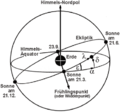
|
||
| Celestial mechanics | Comets | ...in fiction |

|
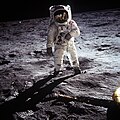
| |
| Minor planets | Moons | Planetary missions |

|

|

|
| Planets... | Sun | Surface feature nomenclature... |

In the news
- April 7: NASA's helicopter Ingenuity survives its first night at Mars
- December 25: 'Earth-based life can survive in hydrogen-rich atmospheres': MIT professor Dr Seager tells Wikinews about her research on organisms thriving in oxygen-less environment
- July 7: Astronomer Anthony Boccaletti discusses observation of birth of potential exoplanet with Wikinews
- May 31: SpaceX successfully launches its first crewed spaceflight
- May 22: Astronomer tells Wikinews about discovery of closest black hole known so far
- October 12: Cosmonaut Alexei Leonov dies at age 85
- October 10: Swedish academy announces 2019 Nobel Prize winners in physics
- September 14: Astronomers find water vapour in atmosphere of exoplanet K2-18b
- March 5: SpaceX Crew Dragon capsule docks with International Space Station
- January 9: Simple animals could live in Martian brines: Wikinews interviews planetary scientist Vlada Stamenković
- November 29: NASA's InSight Lander makes it to Mars
- October 12: Manned Soyuz space mission aborts during launch
Major topics

Solar System: Planets (Definition · Planetary habitability · Terrestrial planets · Gas giants · Rings) · Dwarf planets (Plutoid) · Colonization · Discovery timelineˑ Exploration · Moons · Planetariums
- Sun: Sunspot · Solar wind · Solar flare · Solar eclipse
- Mercury: Geology · Exploration (Mariner 10 · MESSENGER · BepiColombo) · Transit
- Venus: Geology · Atmosphere · Exploration (Venera · Mariner program 2/5/10 · Pioneer · Vega 1/2ˑ Magellan · Venus Express) · Transit
- Earth: History · Geology · Geography · Atmosphere · Rotation
- Moon: Geology · Selenography · Atmosphere · Exploration (Luna · Apollo 8/11) · Orbit · Lunar eclipse
- Mars: Moons (Phobos · Deimos) · Geology · Geography · Atmosphere · Exploration (Mariner · Mars · Viking 1/2 · Pathfinder · MER)
- Ceres: Exploration (Dawn)
- Jupiter: Moons (Amalthea, Io · Europa · Ganymede · Callisto) · Rings · Atmosphere · Magnetosphere · Exploration (Pioneer 10/11 · Voyager 1/2 · Ulysses · Cassini · Galileo · New Horizons)
- Saturn: Moons (Mimas · Enceladus · Tethys · Dione · Rhea · Titan · Iapetus) · Rings · Exploration (Pioneer 11 · Voyager 1/2 · Cassini–Huygens)
- Uranus: Moons (Miranda · Ariel · Umbriel · Titania · Oberon) · Rings · Exploration (Voyager 2)
- Neptune: Moons (Triton) · Rings · Exploration (Voyager 2)
- Planets beyond Neptune
- Pluto: Moons (Charon, Nix, Hydra, Kerberos, Styx) · Geology · Atmosphere · Exploration (New Horizons)
- Haumea: Moons (Hi'iaka, Namaka) · Ring
- Quaoar: Weywot · Rings
- Makemake: S/2015 (136472) 1
- Gonggong: Xiangliu
- Eris: Dysnomia
- Sedna
- Small bodies: Meteoroids · Asteroids (Asteroid belt) · Centaurs · TNOs (Kuiper belt · Scattered disc · Oort cloud) · Comets (Hale–Bopp · Halley's · Hyakutake · Shoemaker–Levy 9)
- Formation and evolution of the Solar System: History of Solar System formation and evolution hypotheses · Nebular hypothesis
- See also: Featured content · Featured topic · Good articles · List of objects
Bold articles are featured.
Italicized articles are on dwarf planets or major moons.
Things you can do

 |
Here are some tasks awaiting attention:
|
Related portals
Related WikiProjects
Associated Wikimedia
The following Wikimedia Foundation sister projects provide more on this subject:
-
Commons
Free media repository -
Wikibooks
Free textbooks and manuals -
Wikidata
Free knowledge base -
Wikinews
Free-content news -
Wikiquote
Collection of quotations -
Wikisource
Free-content library -
Wikiversity
Free learning tools -
Wiktionary
Dictionary and thesaurus
















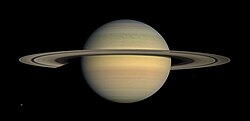












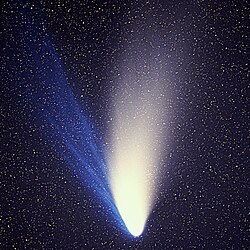




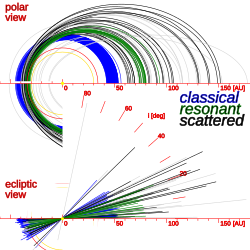




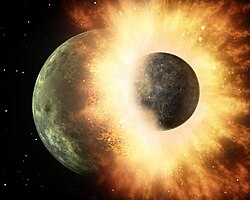















![Image 34Diagram of the Local Interstellar Cloud, the G-Cloud and surrounding stars. As of 2022[update], the exact position of the Solar System within the interstellar clouds remains an unresolved question in astronomy. (from Solar System)](https://upload.wikimedia.org/wikipedia/commons/thumb/7/7c/The_Local_Interstellar_Cloud_and_neighboring_G-cloud_complex.svg/250px-The_Local_Interstellar_Cloud_and_neighboring_G-cloud_complex.svg.png)















